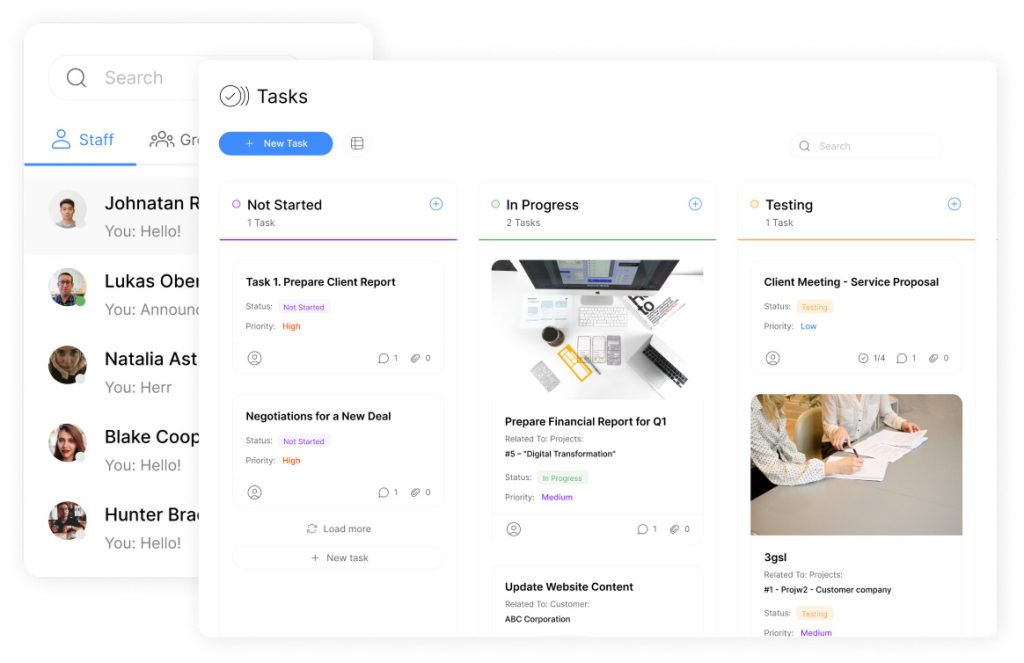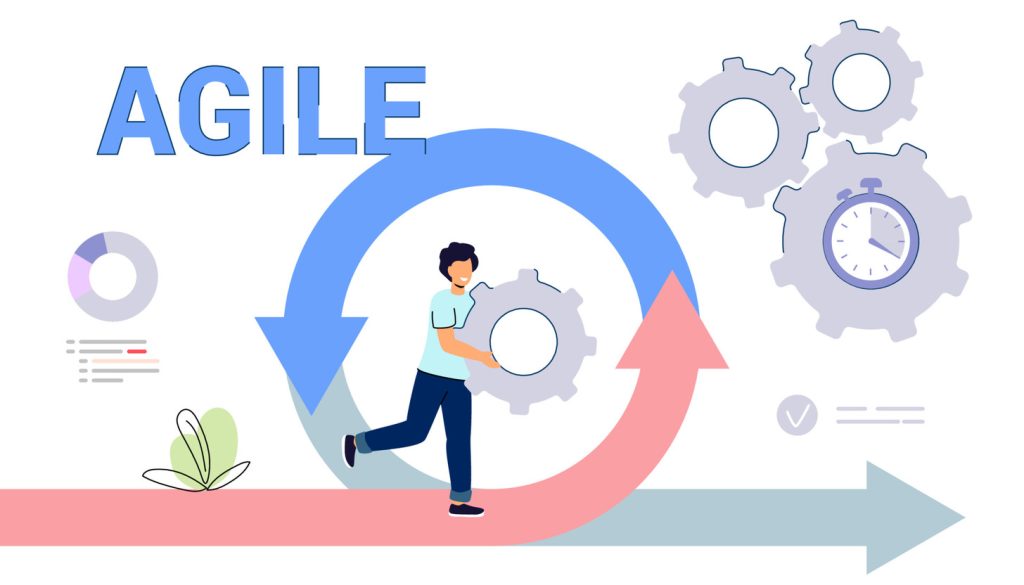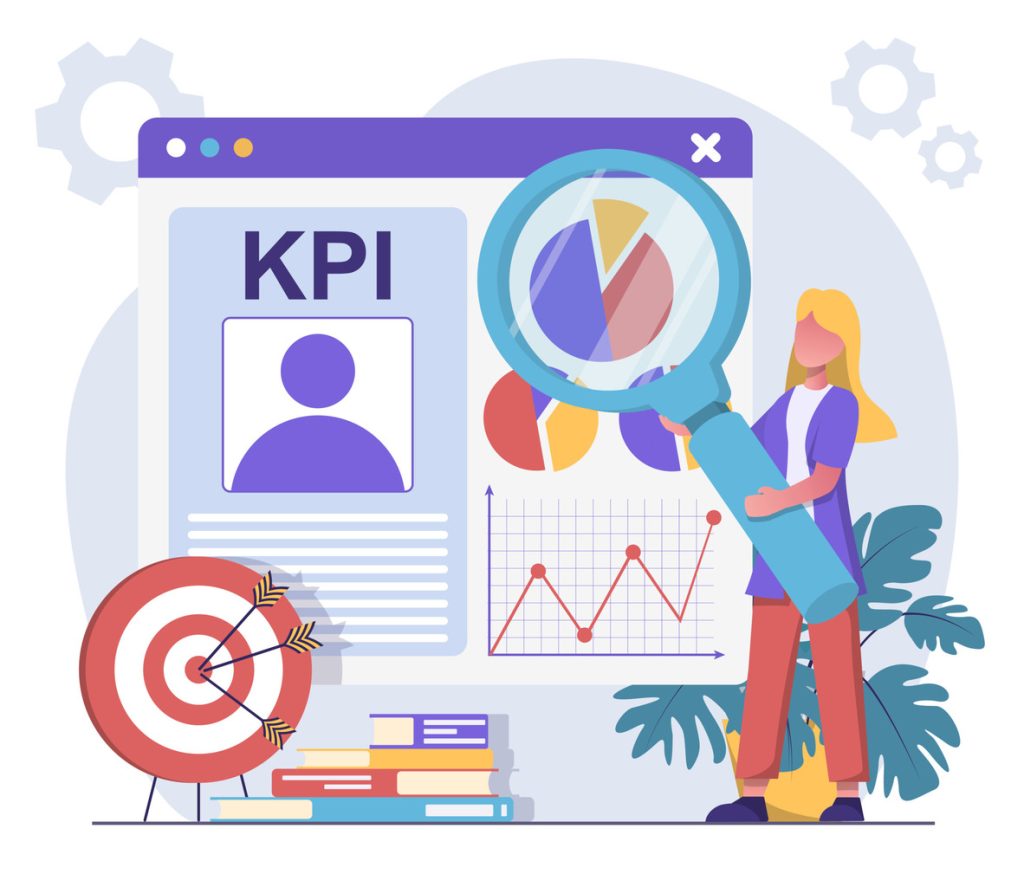Project Management: The Ultimate Guide to Streamlining Operations

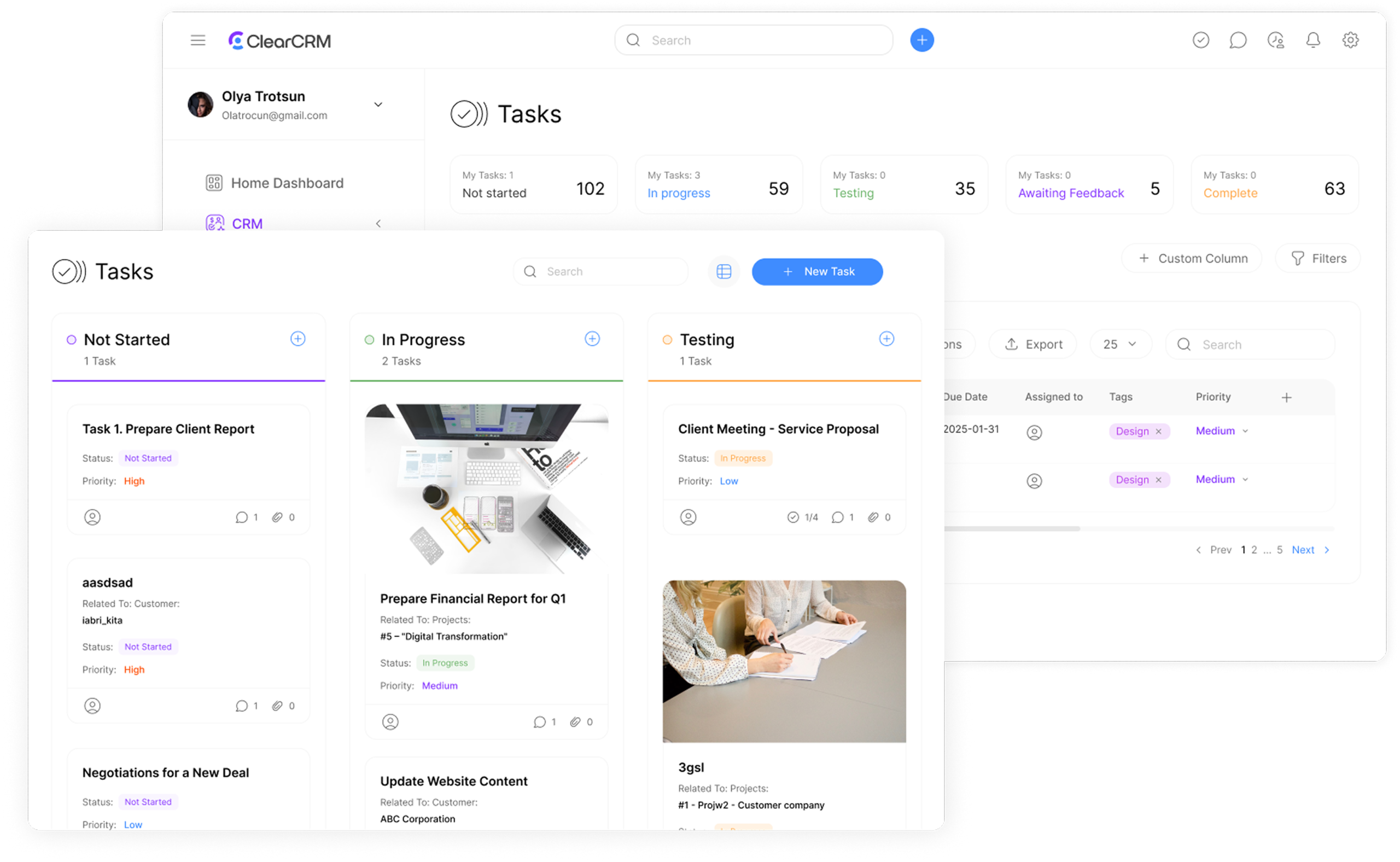
Manage Projects with Full Visibility
- Create and organize projects with clear goals
- Connect projects to deals, leads, or customers
- Track everything from one shared dashboard
Visualize Progress, Eliminate Guesswork
- Use Gantt, Kanban, Calendar, or List views
- Set and track key milestones easily
- Spot delays or bottlenecks in real-time
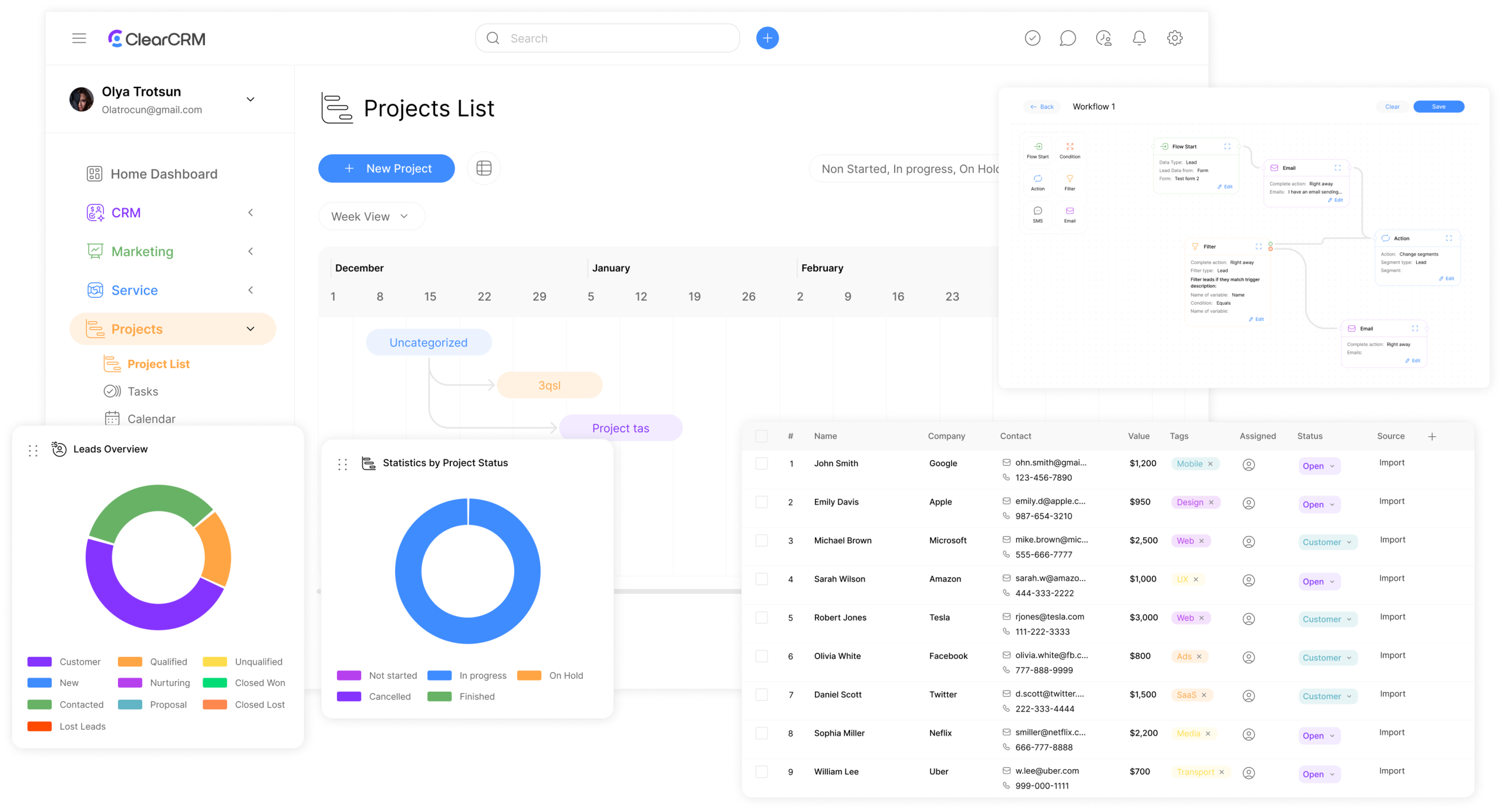
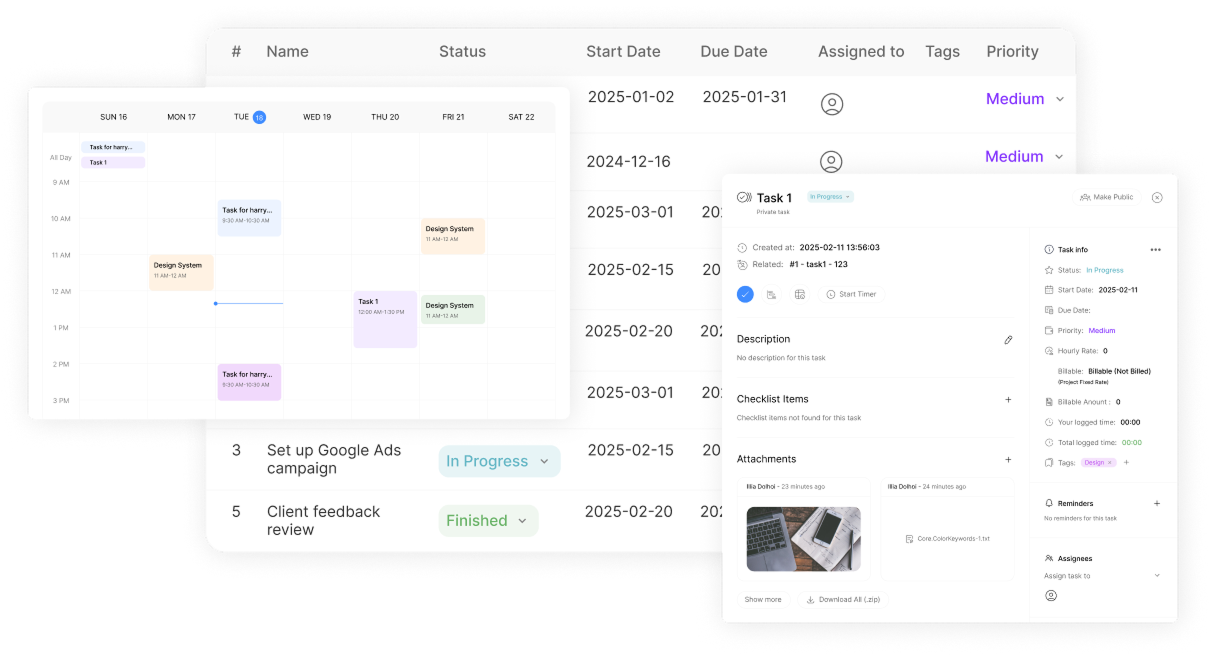
Plan Smarter, Repeat Faster
Save time and reduce risk with repeatable, reliable processes.
Templates, filters, and risk tracking tools keep teams productive.
- Launch new projects with built-in templates
- Filter tasks by owner, deadline, or status
- Log risks and act before they cause delays
Every business faces a critical challenge: turning ideas into outcomes efficiently. This requires a structured approach to coordinating tasks, resources, and timelines. At its core, this discipline focuses on achieving specific objectives within defined boundaries like scope, budget, and deadlines.
This guide unpacks foundational principles and advanced tactics, bridging historical methodologies with modern innovations like Agile and Lean frameworks. Readers will discover how these strategies adapt to evolving business demands while minimizing waste.
Adopting a systematic process isn’t just about checklists. It’s about fostering alignment across teams, anticipating risks, and prioritizing value delivery. Organizations that master this balance see faster decision-making, fewer bottlenecks, and measurable improvements in performance.
Whether launching a new product or optimizing workflows, success hinges on clarity and adaptability. This resource equips leaders with actionable insights to transform chaotic efforts into cohesive, results-driven actions.
Key Takeaways
- Temporary, goal-focused initiatives require balancing scope, time, and budget constraints.
- Modern frameworks like Agile prioritize flexibility and iterative progress.
- Effective coordination reduces delays and aligns teams with organizational priorities.
- Proactive risk management ensures smoother execution and resource optimization.
- Measurable outcomes depend on clear communication and adaptable planning.
Understanding the Fundamentals of Project Management
Organizations thrive when complex initiatives transform into measurable results. This transformation starts with defining temporary, goal-driven efforts—unique endeavors with clear start and end points. Unlike routine tasks, these initiatives demand precise alignment between objectives, resources, and outcomes.
Defining Purpose-Driven Initiatives
At its core, a project is a structured effort to achieve specific deliverables. Objectives act as navigational tools, steering teams toward priorities like launching a product or upgrading systems. For example, a software upgrade might prioritize user experience improvements while adhering to regulatory standards.
Balancing Constraints for Success
Effective planning anchors three critical elements: scope outlines deliverables, timelines set pace, and budgets allocate resources. A retail company expanding its e-commerce platform, for instance, might define project requirements to limit feature creep while meeting launch deadlines. Clear boundaries prevent overcommitment and keep teams focused.
When objectives clash with limitations, compromise becomes essential. A construction firm might reduce material costs without sacrificing safety standards by sourcing alternative suppliers. Such decisions highlight how time and budget awareness drive practical solutions.
A Brief History and Evolution of Project Management
Human ambition to build monumental structures laid the foundation for modern coordination practices. Ancient Roman aqueducts and medieval cathedrals relied on trial-and-error methods. Architects like Vitruvius documented principles still referenced today, though these early efforts lacked standardized processes.
From Civil Engineering to Modern Practices
The Industrial Revolution demanded precision. Visionaries like Isambard Kingdom Brunel engineered railways using systematic resource allocation. By the 20th century, complex initiatives required tools beyond blueprints. The U.S. Navy’s Polaris program introduced PERT charts in 1958, quantifying task dependencies for missile development.
This shift transformed ad hoc efforts into repeatable frameworks. The Project Management Institute, founded in 1969, codified best practices through its body of knowledge. Today’s professionals inherit methods refined through decades of problem-solving.
The Pioneers: Gantt, Fayol, and Taylor
Henry Gantt’s 1910 workflow visualization tool remains a cornerstone for tracking timelines. Henri Fayol’s five management functions—planning, organizing, commanding, coordinating, controlling—shaped modern management plans. Frederick Taylor’s efficiency studies optimized labor productivity in manufacturing.
These innovators proved measurable processes drive project success. Their legacy enables project managers to balance creativity with structure, turning abstract goals into tangible outcomes across industries.
How Project Management Differs from Product Management
Delivering value in business requires understanding distinct approaches for temporary initiatives versus ongoing product development. While both disciplines drive results, their goals and methods diverge sharply.
Temporary efforts focus on fixed deadlines and budgets. For example, launching a software upgrade follows a strict timeline with predefined deliverables. In contrast, product teams refine features continuously based on user feedback, prioritizing long-term market relevance over immediate closure.
| Project | Product | |
|---|---|---|
| Focus | Specific deliverables | Lifecycle evolution |
| Timeline | Fixed end date | Ongoing |
| Success Metrics | On-time, on-budget delivery | Customer retention, ROI |
Execution methods also differ. Temporary initiatives rely on phased processes like Waterfall, while product teams often adopt iterative frameworks like Scrum. A mobile app redesign might use strict sprint cycles (project), whereas post-launch updates follow adaptive roadmaps (product).
Clarity in objectives prevents overlap. Teams handling both areas must separate time-bound tasks from perpetual improvement cycles. This distinction ensures resources align with organizational priorities—whether closing a milestone or refining a process.
Key Concepts and Terminology in Project Management
Mastering structured workflows starts with a shared language. Clear definitions prevent misalignment and ensure teams move toward common goals. This foundation turns abstract ideas into actionable steps.
Lifecycle and Process Groups
Every initiative follows a life cycle—a sequence of phases from start to finish. These stages are distinct but interconnected, ensuring systematic progress. Teams navigate five core process groups:
| Process Group | Purpose | Key Outputs |
|---|---|---|
| Initiating | Define scope and objectives | Charter, stakeholder list |
| Planning | Map timelines and resources | Schedule, budget |
| Executing | Coordinate tasks | Deliverables, updates |
| Monitoring | Track metrics | Adjustments, reports |
| Closing | Finalize outcomes | Feedback, lessons learned |
Milestones mark critical checkpoints, like prototype approvals or budget reviews. Structured processes ensure teams address requirements early, reducing rework. For example, a marketing campaign might set milestones for content drafts and audience testing.
Continuous improvement relies on real-time data. Adjustments during monitoring phases keep efforts aligned with shifting priorities. Standardized terminology—like deliverables or scope creep—creates consistency across departments and industries.
Project Management: Strategies for Streamlining Operations
“Operational excellence isn’t accidental—it’s engineered through deliberate design.” This principle drives modern efforts to refine workflows. Leading organizations achieve peak performance by merging data-driven techniques with adaptive execution frameworks.
Optimizing Processes for Efficiency
Streamlined operations start with process analysis. Value stream mapping identifies redundancies—like redundant approval layers—freeing teams to focus on high-impact tasks. A logistics company reduced shipment delays by 40% using this approach.
| Technique | Purpose | Outcome |
|---|---|---|
| Automation Tools | Replace manual data entry | 22% faster task completion |
| Timeboxing | Limit task durations | 35% fewer missed deadlines |
| Capacity Planning | Align skills with workloads | 18% higher resource utilization |
Cross-training team members prevents bottlenecks. One tech firm boosted productivity by rotating developers between front-end and back-end tasks. Real-time dashboards track KPIs like cycle times, enabling swift adjustments.
“The fastest way to improve outcomes is to eliminate steps that don’t serve the end user.”
Fortune 500 Operations Director
Continuous improvement relies on iterative reviews. Weekly progress audits help teams spot trends—like recurring budget overruns—before they escalate. Clear management plans turn insights into action, ensuring alignment with strategic goals.
Exploring Different Types of Project Management Approaches
Selecting the right framework determines whether teams deliver results or drown in complexity. Structured methods provide guardrails for aligning tasks with objectives while adapting to unique challenges. Leaders who match methodologies to their goals see fewer delays and higher stakeholder satisfaction.
Waterfall, Agile, Lean, and Hybrid Methods
Waterfall works best when scope and deliverables are fixed. Construction teams often use this linear approach—completing design approvals before breaking ground. Each phase flows downward like a cascade, minimizing mid-stream changes.
Agile thrives in dynamic environments. Software developers deploy sprints to refine features incrementally, incorporating user feedback after each cycle. This iterative style prioritizes adaptability over rigid planning.
Lean methods eliminate waste in workflows. A manufacturing plant might streamline assembly line activities by removing redundant quality checks. Every process step is scrutinized for its value contribution.
Hybrid models blend elements from multiple methods. A marketing agency could combine Waterfall’s milestone tracking with Agile’s daily standups for campaign launches. This flexibility balances structure with responsiveness.
| Method | Focus | Best For |
|---|---|---|
| Waterfall | Sequential phases | Regulated industries |
| Agile | Iterative progress | Tech startups |
| Lean | Waste reduction | Manufacturing |
| Hybrid | Custom workflows | Cross-functional teams |
“The method you choose should match the problem, not the trend.”
PMO Director, Fortune 100 Company
Effective planning clarifies roles and timelines, while well-defined activities prevent scope drift. Teams that regularly audit their approach—shifting methods as priorities evolve—maintain momentum even when obstacles arise.
Integrating Modern Tools and Software in Project Management
Digital transformation reshapes how organizations execute critical initiatives. Centralized platforms like Asana and Trello unify fragmented workflows, giving teams visibility into progress while optimizing resources. Studies show companies using these tools reduce task completion times by 30% and improve budget adherence by 22%.
Features to Look for in Project Management Software
High-impact tools share three capabilities:
- Real-time dashboards tracking milestones and resources
- Automated alerts for deadlines or budget thresholds
- Customizable templates aligning with industry-specific needs
For example, Asana’s workload view prevents burnout by highlighting overcapacity. Tools like Monday.com integrate time-tracking directly into task cards, simplifying progress audits.
Leveraging Collaboration and Communication Tools
Cross-functional teams thrive when updates flow seamlessly. Platforms like Slack embed file sharing within topic threads, cutting email clutter. Video conferencing tools with virtual whiteboards—like Miro—enable real-time brainstorming across time zones.
“Teams using integrated communication suites resolve bottlenecks 45% faster than those relying on fragmented systems.”
Asana 2023 Efficiency Report
Granular permission settings maintain control over sensitive data. Automated meeting summaries and action item trackers ensure alignment without manual follow-ups. These features empower teams to focus on execution rather than administrative overhead.
Strategies for Effective Project Planning and Execution
Clear roadmaps separate chaotic efforts from measurable achievements. A well-structured plan aligns teams around shared goals while anticipating obstacles. It transforms vague ideas into step-by-step actions, ensuring everyone knows their role.
Start by breaking complex initiatives into smaller tasks. A software team launching a new feature might divide work into design, coding, testing, and deployment phases. Assigning ownership for each component eliminates confusion and accelerates progress.
The planning process thrives on specificity. Define milestones like prototype approvals or budget reviews. Allocate resources upfront—whether personnel, tools, or timelines. For example, a healthcare provider upgrading IT systems might dedicate 30% of its budget to cybersecurity audits.
| Component | Purpose | Example |
|---|---|---|
| Milestones | Track critical checkpoints | User testing completed by Q3 |
| Deadlines | Maintain momentum | Beta launch in 12 weeks |
| Resource Allocation | Prevent bottlenecks | 2 developers assigned to API integration |
Continuous monitoring lets teams adapt swiftly. Weekly check-ins review progress against targets, flagging delays early. A logistics company reduced delivery errors by 25% after implementing real-time tracking dashboards.
“The difference between good and great execution? A plan that’s detailed enough to guide but flexible enough to pivot.”
Tech Startup COO
Disciplined planning and agile adjustments drive outcomes. Teams that master this balance deliver results faster, turning strategic visions into tangible success.
Utilizing the Critical Path Method (CPM) and PERT
Precision in execution separates thriving businesses from those stuck in gridlock. The Critical Path Method (CPM) and Program Evaluation Review Technique (PERT) provide structured frameworks to identify priority tasks, calculate timelines, and mitigate delays. These methodologies emerged in the 1950s—CPM for chemical plant construction and PERT for U.S. Navy missile development—and remain vital for complex initiatives.
Mapping Tasks and Dependencies
CPM pinpoints the longest sequence of dependent activities that determine a timeline’s minimum duration. For example, constructing a data center requires completing electrical work before server installation. Mapping these dependencies reveals the “critical path”—any delay here impacts the entire schedule.
PERT complements CPM by addressing uncertainty. It uses three time estimates (optimistic, pessimistic, most likely) to calculate weighted averages for activities. This approach helped NASA streamline Apollo mission preparations, reducing planning errors by 35%.
| Method | Focus | Key Feature | Example Use |
|---|---|---|---|
| CPM | Fixed timelines | Identifies critical path | Construction projects |
| PERT | Uncertain durations | Probabilistic modeling | R&D initiatives |
Continuous monitoring ensures plans stay relevant. A healthcare software upgrade team adjusted timelines weekly based on testing results, cutting delays by 20%. Real-time dashboards track progress against baselines, flagging deviations early.
“CPM and PERT turn theoretical schedules into actionable roadmaps. They’re the compass for navigating complexity.”
PMO Director, Fortune 500 Tech Firm
These methods thrive across industries—75% of aerospace and 68% of manufacturing firms report improved on-time delivery after adoption. By aligning tasks with outcomes and prioritizing monitoring, teams transform potential chaos into controlled progress.
Diving into Agile, Iterative, and Incremental Methodologies
In dynamic business environments, rigid plans often crumble under shifting priorities. Agile methodologies thrive here, prioritizing flexibility and continuous refinement. Teams break large objectives into smaller, testable increments—delivering value faster while adapting to feedback.
Why Agility Accelerates Results
Iterative cycles let teams refine deliverables based on real-world data. A fintech startup, for example, improved its app’s user retention by 27% after three sprint-based updates. Each iteration addressed customer pain points uncovered in beta testing.
| Method | Focus | Adaptability | Outcome |
|---|---|---|---|
| Agile | Customer feedback | High | Faster pivots |
| Waterfall | Fixed scope | Low | Predictable timelines |
Incremental progress reduces risk. By launching features in phases, teams spot issues early—like a retail brand that avoided a $500K logistics error by piloting a warehouse tool with one location first. This process turns uncertainty into manageable change.
“Agile isn’t a methodology—it’s a mindset. Teams that embrace ambiguity deliver solutions customers actually need.”
Spotify Engineering Lead
Real-time collaboration keeps efforts aligned with core objectives. Daily standups and retrospectives ensure every change serves strategic goals. A healthcare provider cut software deployment delays by 40% using this approach, proving structured adaptability drives results.
Implementing Lean and Six Sigma in Project Processes
Operational excellence thrives when precision meets purpose. Lean and Six Sigma methodologies merge systematic analysis with measurable improvements, creating workflows that minimize waste while maximizing reliability. These approaches turn theoretical ideals into repeatable results.
Lean principles target inefficiency at its source. By identifying eight types of waste—like overproduction or waiting times—teams streamline activities. A manufacturing plant reduced machine setup time by 65% using value stream mapping, accelerating output without added costs.
Six Sigma techniques tackle variability through statistical rigor. DMAIC (Define, Measure, Analyze, Improve, Control) frameworks reduce defects to 3.4 per million opportunities. A healthcare provider cut medication errors by 52% by applying root-cause analysis and process standardization.
| Method | Focus | Key Outcome |
|---|---|---|
| Lean | Waste elimination | Faster cycle times |
| Six Sigma | Defect reduction | Higher consistency |
Combining these strategies creates dual control over efficiency and quality. A logistics company integrated Lean’s 5S system with Six Sigma’s data-driven audits, achieving 30% fewer shipment delays and 18% lower return rates. Real-time dashboards tracked progress, enabling rapid adjustments.
“Lean ensures we’re doing things right; Six Sigma confirms we’re doing the right things.”
Toyota Production System Lead
These techniques thrive beyond manufacturing. Software teams use Lean sprints to prioritize features while applying Six Sigma metrics to reduce coding errors. The result? Predictable timelines and deliverables that meet strict quality benchmarks.
Organizations adopting this dual approach report 40% faster issue resolution and 25% higher stakeholder satisfaction. By embedding continuous improvement into daily operations, teams maintain control over outcomes even in volatile markets.
Benefits Realization and Outcome-Focused Management
Forward-thinking organizations no longer measure success by completed tasks alone. Instead, they prioritize tangible benefits that align with strategic goals. This shift transforms how teams define value—moving beyond outputs like deliverables to outcomes like revenue growth or customer retention.
Connecting Efforts to Strategic Goals
Outcome-focused strategies ensure every initiative directly supports the business vision. A retail chain, for example, might link a supply chain upgrade to reduced stockouts rather than just software implementation. This approach ties resource investments to measurable improvements in market share or operational efficiency.
| Output-Focused | Outcome-Focused |
|---|---|
| Software deployed | 30% faster order processing |
| Training sessions held | 15% higher employee productivity |
Three practices maximize benefits realization:
- Mapping initiatives to organizational KPIs during planning
- Tracking post-launch metrics for 6-12 months
- Adjusting workflows based on realized value
“We stopped celebrating launches and started celebrating results. That mindset shift doubled our ROI on tech investments.”
Fortune 500 Retail CEO
A healthcare provider redesigned patient portals to reduce administrative calls by 40%—aligning with its business goal of cutting overhead. By anchoring decisions to long-term success, teams ensure efforts deliver lasting impact, not just temporary activity.
Building a Successful Project Team and Defining Roles
High-performing teams don’t form by chance—they’re built through deliberate role design and alignment. Clear expectations eliminate confusion, accelerate decision-making, and ensure accountability. When every member understands their contribution, efforts multiply rather than collide.
Clarifying Responsibilities of the Project Manager and Stakeholders
The project manager acts as the team’s compass. They coordinate tasks, resolve conflicts, and communicate updates across departments. Stakeholders, including executives and clients, provide input on priorities and approve critical milestones.
Role clarity prevents overlaps. For example, a software team might designate the project manager to track sprint deadlines while stakeholders review feature requirements. This separation keeps workflows focused and measurable.
| Role | Key Responsibilities | Impact |
|---|---|---|
| Project Manager | Timeline oversight, risk mitigation | 25% fewer delays |
| Stakeholders | Budget approval, scope validation | 18% higher alignment |
Effective Team Collaboration Techniques
Trust fuels collaboration. Daily check-ins and shared progress dashboards keep everyone informed. A marketing agency reduced revision cycles by 40% using real-time editing tools like Figma.
Practical strategies include:
- Defining communication channels (Slack for quick updates, email for formal approvals)
- Hosting weekly problem-solving sessions to address bottlenecks
- Using RACI charts to clarify task ownership
| Technique | Purpose | Outcome |
|---|---|---|
| Daily Standups | Surface blockers early | 32% faster issue resolution |
| Cross-training | Prevent skill gaps | 27% higher flexibility |
“Teams with documented roles achieve goals 45% faster than those without clear guidelines.”
Asana 2023 Team Dynamics Report
Managing Project Risks, Changes, and Unexpected Challenges
In today’s fast-paced environments, unanticipated challenges can derail even the most structured initiatives. Proactive teams treat change as inevitable—not optional—embedding flexibility into workflows to maintain momentum. For example, a global tech firm avoided $2M in losses by revising supplier contracts midstream during a semiconductor shortage.
Three strategies keep efforts on track:
- Conducting weekly risk assessments to identify bottlenecks early
- Establishing clear protocols for scope adjustments without sacrificing deadlines
- Using real-time monitoring tools to track budget and timeline deviations
Managing complexity requires layered safeguards. A healthcare provider reduced patient data breaches by 60% after implementing tiered access controls and automated alerts. These systems simplified compliance across 12 regional clinics while adapting to evolving privacy laws.
| Challenge | Solution | Outcome |
|---|---|---|
| Supply chain delays | Diversified vendor network | 22% faster recovery |
| Regulatory shifts | Monthly compliance audits | Zero penalties in 18 months |
“Anticipating risks isn’t about predicting the future—it’s about building systems that thrive amid uncertainty.”
Logistics Industry Risk Director
Teams that normalize change reduce downtime by 35% compared to reactive approaches. Regular scenario planning sessions help stakeholders visualize complexity and align contingency budgets. This balance between structure and adaptability turns potential crises into controlled pivots.
Measuring Project Success: KPIs and Performance Metrics
Outcomes, not outputs, define modern business achievements. Teams measure success through quantifiable metrics that align with strategic goals. Key performance indicators (KPIs) track everything from budget adherence to stakeholder satisfaction, turning abstract efforts into actionable insights.
Quantifying Progress with Earned Value Management
Earned Value Management (EVM) translates abstract efforts into quantifiable data. By comparing planned work (Planned Value) to actual results (Earned Value), teams gauge progress objectively. For example, a $500K software upgrade at 50% completion should deliver $250K in value—anything less signals delays or overspending.
| KPI | Purpose | Example |
|---|---|---|
| Schedule Performance Index (SPI) | Measure timeline efficiency | 1.2 = 20% ahead of schedule |
| Cost Variance (CV) | Track budget deviations | -$15K = overspending |
| Milestone Completion Rate | Assess deliverables alignment | 8/10 phases done |
Weekly reviews prevent misalignment. A healthcare provider reduced patient portal errors by 33% after monitoring user feedback KPIs monthly. Teams adjust workflows based on trends like recurring budget overruns or delayed approvals.
“EVM turns guesswork into strategy. If your metrics don’t show value, your plan needs revision.”
PMO Director, Aerospace Firm
Real-world results drive success. An aerospace company improved on-time launches by 28% using SPI and CV dashboards. Regular audits ensure deliverables meet evolving standards, proving measurable value beats vague benchmarks.
The Future of Project Management in a Digital Age
Digital innovation is rewriting the rules of how teams achieve goals. Advanced analytics and AI now predict bottlenecks before they occur, while decentralized teams collaborate seamlessly across continents. Research shows organizations using these tools complete initiatives 37% faster than those relying on legacy systems.
Emerging platforms automate repetitive tasks like scheduling and resource allocation. Predictive algorithms analyze historical data to forecast risks, allowing leaders to adjust timelines proactively. For example, a construction firm reduced delays by 29% using AI-driven weather pattern analysis to reschedule site work.
| Traditional Approach | Digital Future |
|---|---|
| Manual progress tracking | Real-time dashboards with AI alerts |
| Static budgets | Dynamic cost modeling using machine learning |
Cross-functional teams now prototype solutions in virtual environments. A healthcare provider tested ER workflow changes through VR simulations, cutting patient wait times by 19% before implementation. This shift turns research into actionable insights faster than ever.
Leaders who embrace these trends accelerate progress while minimizing waste. As one tech CEO noted:
“Our predictive tools spotted a supply chain crisis six weeks early. That foresight saved $4.2 million in potential losses.”
The next frontier: systems that learn from past initiatives to optimize future outcomes. Teams adopting these innovations report 43% higher stakeholder satisfaction, proving that technological fluency drives sustainable success.
Conclusion
Turning strategic visions into reality demands more than plans—it requires a roadmap. This guide demonstrates how structured approaches transform chaotic efforts into coordinated results. From defining objectives to selecting methodologies, every step builds toward client-centric outcomes.
Effective execution hinges on three pillars: adaptive frameworks like Agile, proactive risk mitigation, and modern collaboration tools. These elements create a safety net for closing projects successfully while maintaining stakeholder alignment. Companies using this balanced way of working report 35% fewer delays and 28% higher satisfaction rates.
The path forward is clear. Integrate complementary techniques—Lean’s efficiency with Six Sigma’s precision—to eliminate waste. Use real-time dashboards to monitor progress against client expectations. Prioritize flexibility without losing sight of deliverables.
This resource serves as a tactical guide for teams ready to streamline operations. By applying these strategies, organizations can navigate complexity with confidence, turning ambitious goals into measurable wins. The way businesses approach closing projects now defines their competitive edge tomorrow.




